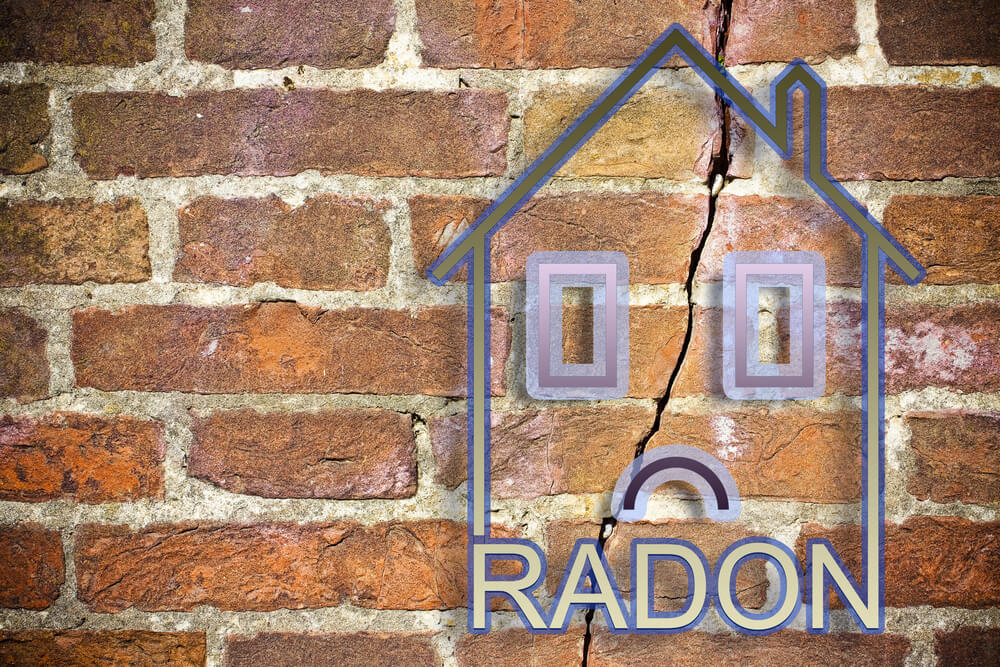Radon is a radioactive gas that’s in many Kansas City homes. That’s why every home buyer needs an inspection. It’s common and easily fixed so don’t panic if the home you’re purchasing has high levels. Here’s what you need to know about radon, and mitigating it.
Radon Mitigation Kansas City
The air in one out of every 15 homes has the cancer-causing radioactive gas. In Kansas City, the incidence is usually higher because it’s more naturally prevalent in this area.
Radon occurs from the natural breakdown of uranium in rock, soil, and water. Once that happens, the gas finds its way into a home through holes and cracks in the foundation.
[trx_quote title=”U.S. Surgeon General Health Advisory”]Indoor radon is the second-leading cause of lung cancer in the United States and breathing it over prolonged periods can present a significant health risk to families all over the country.”[/trx_quote]While alarming to some home buyers, it’s not a deal breaker. That’s because it’s possible to mitigate.
The Environmental Protection Agency puts it this way — radon is a health hazard with a simple solution!
Radon Levels in Kansas City
Radon levels in Kansas City are typically high, since homes here are in a high hazard area, determined by the Environmental Protection Agency. Jackson, Clay, and Cass County Missouri homes are all in the red zone. That means indoor air typically has radon levels above the acceptable range. So, homes here need a mitigation system to eliminate health concerns.
On the Kansas side of the metro, Johnson and Leavenworth Counties Kansas are also in the red zone.
Most homeowners (sellers) don’t know if they have it because they never tested for it. You can’t see or smell radon. So, without a test you don’t know if the levels in the air are safe.
Don’t assume a home doesn’t have the radioactive gas because the neighbors tested and didn’t find it. Every home is different. Play it safe, and have the home you’re purchasing tested.
If the home you’re buying has a radon mitigation system, you still want to test the air. That way you know the device works. Testing is part of mitigation. You want to re-test every few years.
The tests are inexpensive. Mitigation is more costly, which is why it’s best you test before you buy a home. That way you can incorporate the radon mitigation cost into the real estate negotiation.
In Kansas City, radon testing should be part of every home inspection. Ask your home inspector if he provides the service or contracts it out.
Seller advice
In Kansas City, sellers should think about radon before they put their home on the market.
If the test comes back clear, you can market it as radon free to buyers. That may make your house stand out to buyers, compared with your neighbor’s homes which may have the gas.
On the flip side, if the home tests positive for it you can fix the issue before the home goes on the market. That speeds up the real estate sale and shows you’re a proactive homeowner.
Relevant tests for home buyers are within the last two years.
How to test for radon
Test for radon in the lowest level of the home that you use, even if you don’t sleep there or spend the majority of time in that room. You can buy DIY testing kits, but you want a professional for a real estate transaction.
Professional testers use specialized equipment to detect radon in the air. There are two types of testing – passive and active.
In passive testing, a device sits in the open air for a specific amount of time. The monitoring system doesn’t need power to work. Devices sold in hardware stores and DIY kits are typically this type.
Active devices use power and continuously monitor the air in a home. The radon levels change based on time of day, weather, and a homeowners habits.
Here’s what you need to know — testing is easy. The device measures the air quality in your home for a few days, but it requires no effort from the buyer or seller.
How to mitigate radon
In Kansas City, a vent pipe and fan typically remove the gas from a home. It’s installed in your home’s slab. A tall pipe pointing away from the house is a telltale sign of a mitigation system.
After the mitigation, the radon company re-tests your home to verify the repairs lowered the levels.
The EPA also encourages you to re-test your home every few years to make sure the system works properly.
If you have any radon questions, let me know. I can also put you in touch with a reliable and trustworthy Kansas City radon expert to test your home.





 3751 NE Ralph Powell Road
3751 NE Ralph Powell Road 

